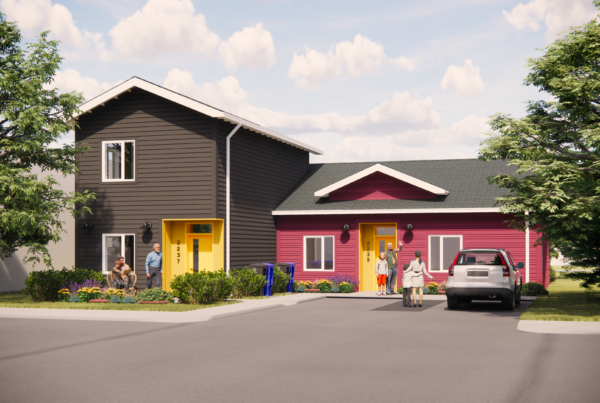
Bridging the gap of communication with the use of technology has been a strategic focus at Holland Basham Architects since the opening of our Denver, Colorado office. Our approach has been to create a technology-driven infrastructure in order to support both offices, our employees and clients around the U.S. Staying up-to-date with evolving technology has boosted efficiency, work culture and relationships within the business.
Machine Learning, Artificial Intelligence, Virtual Reality (VR) and Web-Based Management Software are tools that have been implemented during this process. These tools help our architects and designers utilize the enormous amounts of data produced from a variety of sources while being able to easily translate information between project teams. Many of our clients face the same challenges of having employees spread across multiple locations both nationally and internationally. Solving communication problems to provide real-time feedback between multiple departments, user groups, and locations is mandatory and critical to the institutional mission. With the use of diverse systems, VR can allow communication and collaboration to happen in a natural and organic way.
Whether we are opening a new office or working with clients remotely, there can be numerous challenges impacted by miscommunication between project teams located in different states. Our team has been able to face these challenges and implement communication systems linking offices, teams and the client together. These systems consist of emailing, phone and video conferencing, Yammer (office Facebook), Microsoft Teams (task manager), and VR-multi-user. Due to technology, Colorado Office Leader and Senior Associate Thomas Berry has been able to continue to work on Omaha projects, such as the Creighton Preparatory High School Student Commons and Bell Tower Addition.
“Through technologies such as remote screen sharing for collaborative sketching sessions, Skype video conferencing, multi-person virtual reality walkthroughs for design concept and quality control reviews, and even simply sharing files and production workload between offices via VPN or cloud-based connections, we’ve been able to effectively bridge the gap of physical distance,” Says Thomas Berry. “These systems allow us to work efficiently and effectively while maintaining our core values of fostering strong connections with our clients, providing clear and frequent communication, and ensuring a highly collaborative process to deliver the best possible end product to our clients.”
Working across the U.S. with clients has allowed our firm the opportunity to explore various types of technology in order to best serve varying industry types. For example, HBA and John Deere have partnered together for 20+ years on projects around the world. This relationship has remained consistent with the assistance of technology. It has given our team the ability to ensure thorough communication throughout the duration of every project. Currently, our team is implementing workplace strategy solutions with John Deere’s Global IT Division in the Quad Cities. Utilizing remote virtual reality software, our team has the ability to fly through each renovated area prior to construction. Our teams can be in different geographic locations but in the same virtual model. This technology, in addition to web-based management systems, gives the client the ability to stay connected to the team and see all changes in real-time. Distance no longer has an impact on communication with the use of these tools and a project team who is committed to client satisfaction.
Additionally, interactive virtual mock-ups provide cost-effective opportunities for clients in multiple market sectors to evaluate their space prior to construction. It allows healthcare clients to conduct workflow scenarios in acute care, ICU, operating rooms, central sterile and birthing centers to understand exactly where essential items need to be placed. With the high priority on operational and safety measures in healthcare, it is critical that VR is implemented early on to improve or detect any deficiencies in the design.
Overall, utilizing this technology whether it is healthcare, corporate, education or between our Denver and Omaha office, allows our team to improve our process, understand operational methods and aid in technical problem-solving. The ability to have real-time feedback assists in creating a structured team and enhances communication while designing around client expectations that ultimately result in a better product.
Written in collaboration by Director of Innovation, Matt Neaderhiser, AIA, Warren Curry, AIA, and Angelina Mangiamelli



